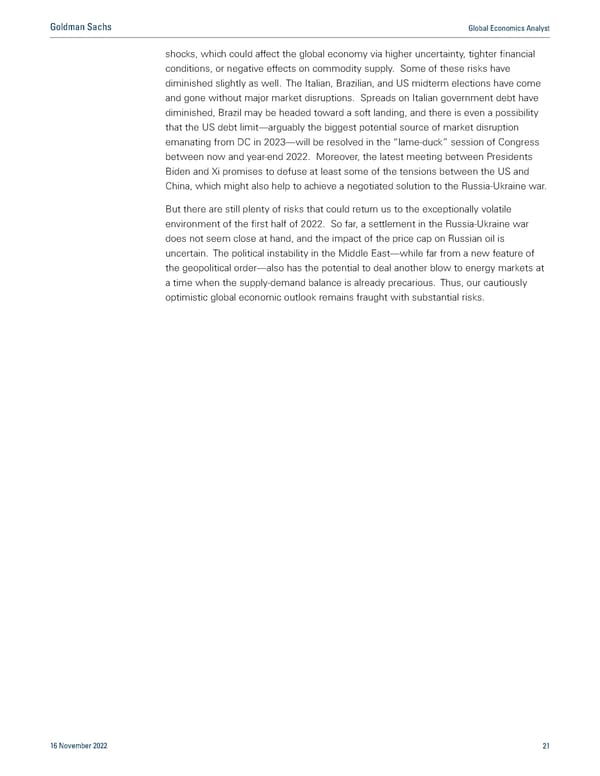Goldman Sachs Global Economics Analyst shocks, which could affect the global economy via higher uncertainty, tighter financial conditions, or negative effects on commodity supply. Some of these risks have diminished slightly as well. The Italian, Brazilian, and US midterm elections have come and gone without major market disruptions. Spreads on Italian government debt have diminished, Brazil may be headed toward a soft landing, and there is even a possibility that the US debt limit—arguably the biggest potential source of market disruption emanating from DC in 2023—will be resolved in the “lame-duck” session of Congress between now and year-end 2022. Moreover, the latest meeting between Presidents Biden and Xi promises to defuse at least some of the tensions between the US and China, which might also help to achieve a negotiated solution to the Russia-Ukraine war. But there are still plenty of risks that could return us to the exceptionally volatile environment of the first half of 2022. So far, a settlement in the Russia-Ukraine war does not seem close at hand, and the impact of the price cap on Russian oil is uncertain. The political instability in the Middle East—while far from a new feature of the geopolitical order—also has the potential to deal another blow to energy markets at a time when the supply-demand balance is already precarious. Thus, our cautiously optimistic global economic outlook remains fraught with substantial risks. 16 November 2022 21
 Goldman Sachs Global Economics Analyst Macro Outlook 2023 Page 20 Page 22
Goldman Sachs Global Economics Analyst Macro Outlook 2023 Page 20 Page 22